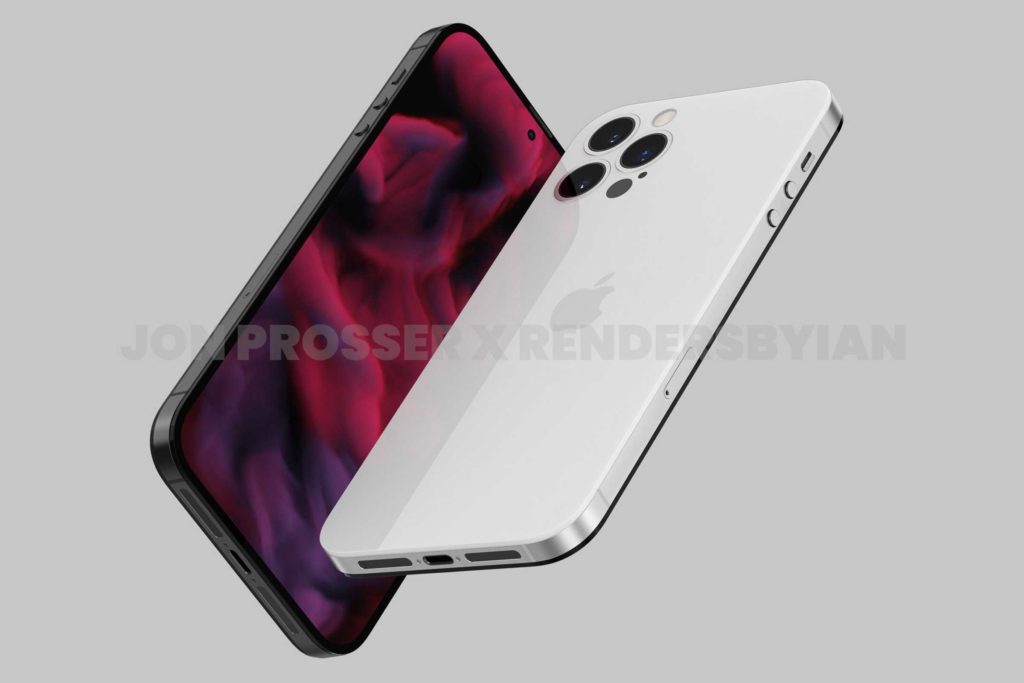The iPhone 13 isn’t even here yet, and there are already pundits and analysts claiming to know what’s in store for the iPhone 14. At this point, you should regard all such reports with extreme skepticism, regardless of the source. Apple tests many new technologies, but whether they make it into the iPhone or not has to do with a complicated web of technical feasibility, cost, availability of parts from suppliers, and more.
In other words, Apple itself probably will not have truly nailed down the iPhone 14’s specs until the first half of 2022. Some assumptions are safer than others (it will almost certainly have an A16 processor manufactured by TSMC), but chasing down rumors at this early stage is more of an exercise in entertainment than reliable information.
With all of those caveats out of the way, here’s what we’ve heard so far about the iPhone 14.
iPhone 14: The latest rumors
September 8: Jon Prosser has spilled a ton of early details about the iPhone 14, including a notch-less design.
July 26: An investors report from JP Morgan Chase (via Macrumors) claims that the iPhone 14 Pro models will feature a titanium case instead of stainless steel.
July 5: A report from The Elec says LG is aiming to produce LTPO OLED displays for the iPhone 14 that can all support 120Hz. So 120Hz ProMotion may come to all iPhones next year.
June 23: Analyst Ming-Chi Kuo (via Macrumors) says some iPhone 14 models will include an under-display Touch ID sensor in addition to Face ID.
iPhone 14: Sizes, design, and display
The iPhone 12 comes in four sizes. There are two “regular” iPhone 12 models: a 6.1-inch and a 5.4-inch mini. And there are two Pro models: A 6.1-inch and a 6.7-inch Max model. We expect the same of the iPhone 13.
But the iPhone 14 is rumored to drop the mini model in favor of a less-expensive Max model. So we’ll get two 6.1-inch iPhones (regular and Pro) and two 6.7-inch Max iPhones (regular and Pro). This will be good news for those who want the larger Max size but wince at the $1,100 starting price. It also could come in a new titanium finish rather than stainless steel, according to rumors. And the volume buttons could return to the round shape last seen with the iPhone 5s.
An early rumor by Ming-Chi Kuo said that the Pro models, at least, would have no more “notch” for the TrueDepth sensors at all, but rather a “hole-punch” camera similar to those on some Android devices, at least on the Pro models. That rumor was backed up in early September by Jon Prosser, who reported that It’s not clear whether this would somehow incorporate the additional sensors required for Face ID, or if there would be several “holes” in the display to accommodate the full array. Prosser says “the Face ID array still exists …it’s just under the display.” Additionally, Prosser says the phones will be thicker so “the camera bump is mostly gone” and all camera elements rest flush against the back glass.

Jon Prosser/Renders By Ian
iPhone 14: Camera
Big changes are apparently coming to the iPhone’s camera in the iPhone 14. Appel is said to be considering a 48-megapixel sensor for the standard wide camera, which would combine the pixels’ light collection in a 2×2 grid when in a low-light situation (producing a 12MP photo). The camera would be capable of shooting 8K video, at least on the Pro models.
Also rumored to be reserved for the Pro models would be a new periscope telephoto camera, which would allow optical zoom up to 10x. We’ve seen similar cameras on other phones, including the Samsung Galaxy S21 Ultra.
iPhone 14: Performance, battery, and biometrics
The iPhone 13 is said to have 120Hz ProMotion displays on the Pro models, with panels made by Samsung, while the non-Pro variants will reportedly use regular 60Hz displays made by LG. With the iPhone 14, LG is said to be making LPTO OLED displays capable of 120Hz to supply the entire iPhone line. So it’s possible that the entire iPhone 14 line will have 120Hz ProMotion technology, which would follow Apple’s natural cadence: bring a feature to the Pro model first and then follow with the rest of the line a year later.
Though it hasn’t been widely reported, every new iPhone has a new A-series system-on-chip (SoC) and we expect the iPhone 14 to follow suit. The A16, as it will likely be called, could be one of the first large-scale processor releases to use TSMC’s 3-nanometer manufacturing process, which should help improve performance, efficiency, and battery life.
Following a rumor by Ming-Chi Kuo, Mark Gurman suggested in his Power On newsletter that Apple is testing an iPhone with an in-display Touch ID sensor that could come to the Pro models, echoing previous rumors. However, he says Apple is “all-in on Face ID for its higher-end iPhones” with the ultimate goal of “implement Face ID in the display itself.” That tracks with Prosser’s rumor of a notch-less iPhone 14, though Gurman hasn’t said whether he expects the 2022 iPhone to retain the notch.
iPhone 14: Release date and price
Apple typically releases new iPhones in the fall, usually announcing them in September with a release date from two to four weeks after. We haven’t heard anything that leads us to believe that 2022 will be any different.
Pricing on the iPhone 14 models will probably be a little different from existing iPhones, in that there isn’t expected to be a 5.4-inch mini version but rather a lower-cost 6.7-inch Max size that Kuo said could come in at under $900. With that in mind, we expect the lineup to range from roughly $800-$1,000, depending on model and size.

